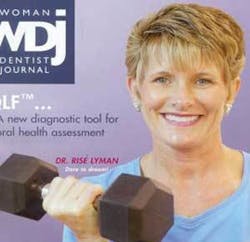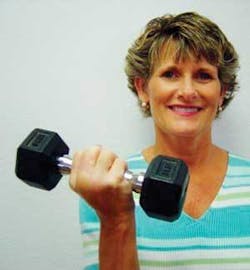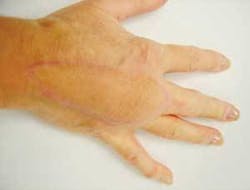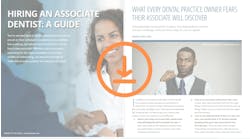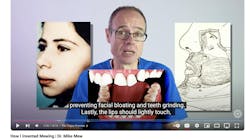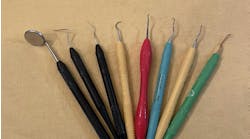by Risé Lyman, DDS, MBA
Wow! What a great response I had to my first arthritis article. Thank you to everyone who reads WDJ and especially those of you who replied to me. I realize there are a lot of dentists surviving with rheumatoid arthritis and other types of arthritis.
Many of your responses were inspirational stories. One was about going from full dental disability to a new career. Another involved a woman who attempted suicide in response to a divorce and depression, but with the help of a friend (an angel?), is back at work. Others mentioned homeopathic treatments that provided miraculous results. I continue searching the medical literature in this area, and I encourage you to contribute your story, expertise, or both.
Since my most recent article, I have had another surgery to repair the flexor tendon in my middle finger, and I am finally capable of clenching my fist - almost completely. Thank you for all of the well wishes, tips, and prayers. They have definitely helped. My new best friend is a TENS unit to dissipate the pain. I continue exercising (I incorporate yoga now) and have begun a different nutrition regimen. (See Figs. 1 and 2.)
Rheumatoid arthritis affects the cells that line and normally lubricate the joints (synovial tissue). The synovium becomes inflamed and swollen and erodes the cartilage and bone. The swollen tissue may also stretch the surrounding ligaments and result in deformity and instability. The inflammation may spread to the tendons and cause them to rupture. (I can relate to this after five surgeries to repair tendons). Arthritis in the hand is most common in the wrist and finger knuckles.
Besides stiffness, swelling, deformity, and pain, one may experience a soft lump over the back of the hand that moves with the tendons that straighten the fingers, a crepitus sound during movement, a finger drifting away from the thumb, clicking or triggering during bending, unstable joints, numbness or tingling (carpal tunnel syndrome), and rupture of the tendons.
Fig. 3 Postsurgery in January 2006. Notice the inability to flatten palm and the drifting from the thumb.
There is no cure for rheumatoid arthritis. Surgical procedures might help, but there is no guarantee that surgery won’t make matters worse. (See Figs. 3 and 4.)
Arthritis is more common in women 40 and older. (I am 53, so ladies, our future looks bleak.) I hope that research will help prevent this disease and develop effective pain relief so sufferers won’t feel “drugged up” all day.

